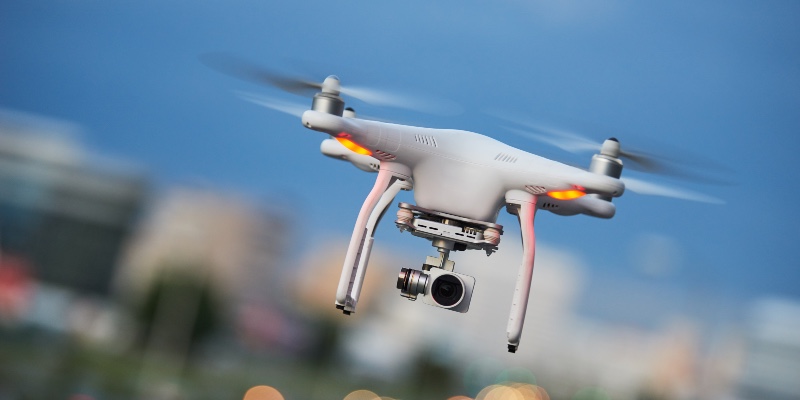If you’re looking to get your prescription delivered to you in the midst of COVID-19, maybe look to the skies.
In April, CVS, in partnership with UPS, launched a pilot program to deliver medication via drone to residents of The Villages, a retirement community in Florida. Under this program, drones bring medication to a central location near the retirement community, and UPS delivery trucks deliver the medication from there. The eventual goal is for drones to complete the entire delivery, though it’s unclear if that goal has yet been reached.
As delivery takes to the sky in an effort to keep more people home, one has to wonder: are drones going to disrupt traditional medication delivery, or is this just a move higher up the delivery market?
High-tech ≠ disruptive
“Disruptive Innovation” is often mischaracterized as a breakthrough technology, when in fact it has a different meaning. These innovations take root at the lower end of a market, providing a simpler, less expensive alternative to an existing product or service for those who would happily pay less (the overserved), or those who previously did not consume existing solutions (nonconsumers). Over time Disruptive Innovations improve and move upmarket, until they upend—or disrupt—industry leaders.
With more people staying home there’s been a rise in medication deliveries, and drone companies have seized the opportunity to expand their role in the industry. For CVS, the goal was to eliminate the need to step foot in a pharmacy altogether, but the means to do that already existed—medication delivery is not a new industry.
Modern efforts to deliver prescriptions by mail are technological improvements on the first mail order pharmacies of the 1940s, and CVS itself has offered prescription delivery nationwide since 2018. Different prescription delivery companies offer different perks; ZipDrug is tailored to Medicaid patients; Amazon’s PillPack offers 24/7 technical assistance; and NowRx, a Californian delivery service, has free same-day delivery if you order before 5 pm.
For many patients, getting prescriptions delivered enables access where mobility issues and lack of brick and mortar pharmacies exist. A 2016 study found that adherence to medication for stroke patients receiving medication by mail was 74%, compared to 47% for those whose option was a walk-in pharmacy.
Rather than use drones to expand the delivery market or reach overserved customers—a disruptive strategy—the UPS/CVS partnership is continuing to serve the same customers with a more “high-tech” solution. Unfortunately, high-tech doesn’t necessarily mean better, as anyone with a high-tech television remote control will tell you. In this instance drones seem to add an unnecessary, more complicated step in the delivery process Even if they are able to replace UPS’ delivery trucks, a simple resource swap won’t add value.
How drones can reach their potential
For drones to be deployed in a way that’s actually helpful, they should either target existing consumers with an improved service—what we call a sustaining strategy—or go the disruptive route.
A potential benefit of drone delivery is shipping time-sensitive medications—such as those that need to be kept at a certain temperature—at an expedited rate. This targets existing consumers who are underserved by current delivery services, which aren’t equipped to handle time-sensitive prescriptions. In this scenario, retail drone delivery would target a higher-end, niche consumer, and companies could potentially charge a premium for their service.
Alternatively, Zipline, a medical supply delivery service, is a potentially disruptive example of drone use. Zipline contracts with governments to deliver emergency medical supplies (such as blood and plasma) to rural or hard-to-reach areas in several underresouced countries. Their focus is on the “last mile problem,” or the inability to deliver products due to treacherous terrain or inadequate transportation. Their delivery reach is growing: Zipline’s experience in Rwanda gained US attention, and the company now provides delivery and logistic support to rural hospitals in Nevada, PPE to hospitals in North Carolina, and is partnering with the military to test supply delivery in combat zones. In creating a new delivery market internationally, it’s paving the way to potentially disrupt traditional delivery stateside.
It’s entirely possible that drones will become more widespread, to the point of being the primary vehicle for all manner of deliveries. The question is whether or not future drone developments improve upon existing medical deliveries, or actually disrupt them by making delivery even more simple and affordable. Disruption is a process, so we may not know the answer for a while. But however they progress in the healthcare world, we’ll be following their progress.


